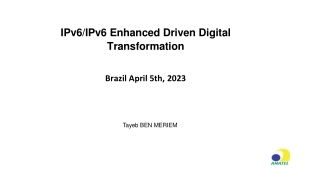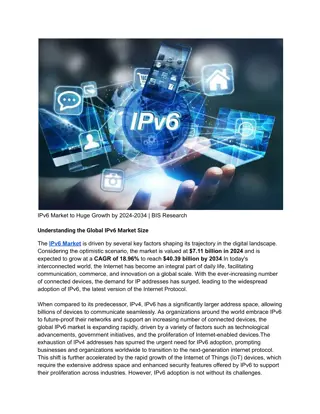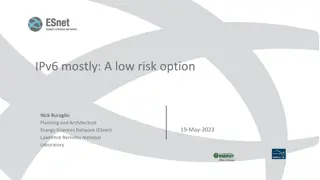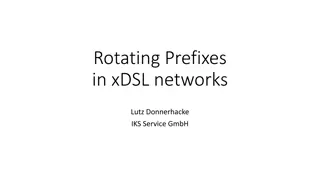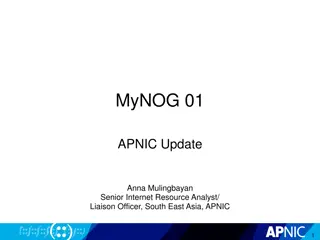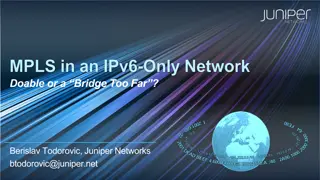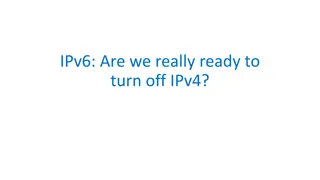Evolution of IPv6 Adoption in the Networking Industry
IPv6 adoption has reached 30% globally by the start of 2022. However, progress varies among different sectors, with enterprises lagging behind consumer markets. The slow transition is attributed to market saturation, legacy network issues, and cost considerations. Despite the benefits of IPv6 deployment, such as relieving pressure on IPv4 pools, the process unfolds gradually without a definitive milestone. The shift towards IPv6 signifies a significant evolution in networking infrastructure.
Download Presentation

Please find below an Image/Link to download the presentation.
The content on the website is provided AS IS for your information and personal use only. It may not be sold, licensed, or shared on other websites without obtaining consent from the author.If you encounter any issues during the download, it is possible that the publisher has removed the file from their server.
You are allowed to download the files provided on this website for personal or commercial use, subject to the condition that they are used lawfully. All files are the property of their respective owners.
The content on the website is provided AS IS for your information and personal use only. It may not be sold, licensed, or shared on other websites without obtaining consent from the author.
E N D
Presentation Transcript
IPv4 IPv4
Where are we with IPv6 adoption? At the start of 2022 IPv6 finally touched 30% of the world s users
But not everyone all at once 52% 41% 48% 52% 24% 77% 34% 32% 0
Why? This is a deregulated industry, not a command economy Access markets are showing signs of saturation which means that established access enterprises see less scarcity pressures than new market entrants the larger established providers are showing no signs of stress, so we wait and wait and Enterprises are far less enthusiastic about IPv6 than consumer retail (weekday use of IPv6 is lower than weekend use) Legacy 3G networks had issues with dual protocol support This is a market where early adopters are penalised with additional cost and laggards are rewarded by avoiding incremental costs
IPv6? Deployment of IPv6 does not instantly provide the network operator with competitive advantage Yes, they still need to support IPv4 access to end client systems The support infrastructure is now required for both protocols But there are some advantages The general support for DNS-based Happy Eyeballs in apps and platforms means that dual stack deployment relieves pressures on residual IPv4 pools in CGNs
Not with a Bang but a Whimper This is shaping to be a story of a protracted decline of reliance on IPv4 There is no clear flag day, and no clear event to say we ve arrived! Consumer markets are in transition Enterprise markets will follow Because we have no alternative path to follow!


